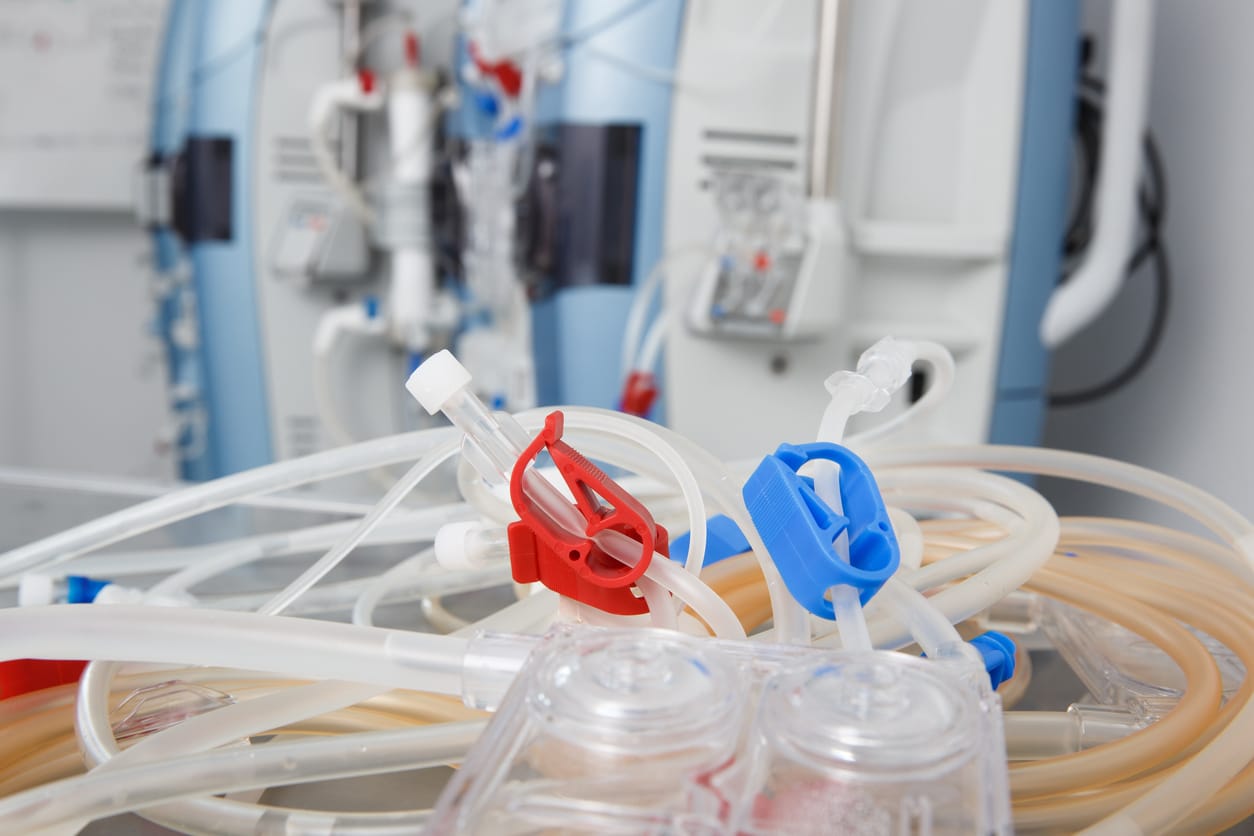Dialysis Access Management
Revolutionizing Dialysis Care: Experience the Coastal Vascular Center Difference
At Coastal Vascular Center, our mission goes beyond standard care; we’re pioneering a new era of dialysis management, deeply rooted in empathy, innovation, and excellence. Dialysis demands exceptional technical capability and a personalized approach that respects each patient’s journey and challenges. With this philosophy at our core, Dr. Divyang C. Ayar leverages the latest in vascular health technologies and treatment modalities to ensure that every aspect of your dialysis process is optimized for comfort, effectiveness, and overall wellness.
He recognizes the importance of a seamless, integrated approach to dialysis management. Therefore, our services are designed to enhance your dialysis experience, from minimizing complications to improving the longevity and reliability of your vascular access.
Here, in the heart of our community, we’re not just managing symptoms; we’re nurturing hope, empowering patients through education, and offering a supportive environment that encourages healing and growth. Our commitment to redefining dialysis care is unwavering, and we invite you to discover the difference compassionate, innovative care can make in your life. Welcome to a place where your vascular health is our top priority and each day brings us closer to a brighter, healthier future. Join Coastal Vascular Center, where your journey toward optimal well-being is our greatest inspiration.
What Is Dialysis Access Management
Dialysis access management is a critical component of treatment for patients suffering from kidney failure. Before a person can receive hemodialysis, a procedure necessary to clean the blood when the kidneys are no longer able to do so, there must be a reliable way to access the bloodstream. This is known as creating a vascular access point. The management of this access point is vital because it’s the patient’s lifeline, allowing for the efficient exchange of blood between the body and the dialysis machine.Types of Dialysis Access
There are generally three types of dialysis access: 1. Fistula: Created by joining an artery to a vein in the arm, allowing the increased blood flow to strengthen the vein. Fistulas are preferred due to a lower infection risk and longer functionality. 2. Graft: A soft tube is implanted under the skin to connect an artery to a vein, usually when vessels are not suitable for a fistula. Grafts are the second-best option, offering good blood flow for dialysis. 3. Catheter: For temporary or long-term use when a fistula or graft isn’t possible, a catheter is placed in a large vein in the neck or chest. Catheters have a higher risk of infection and are typically considered a last resort.Take Charge of Your Dialysis Journey
Your vascular health is critical to effective dialysis treatment. Don’t wait for complications to dictate your path. Reach out to Coastal Vascular Center today and schedule an appointment for unparalleled dialysis access management. Together, we’ll ensure your access is in top condition for optimal treatment outcomes.
The Role of Dialysis Access Management
The goal of dialysis access management is to maximize the life and health of the access point. This involves: 1. Surveillance: Regular monitoring for signs of dysfunction, such as narrowing (stenosis) or clotting, which can decrease the efficiency of dialysis. 2. Maintenance: Addressing any issues promptly, often using minimally invasive procedures such as angioplasty or thrombectomy to improve or restore flow. 3. Intervention: Providing necessary treatments to repair or revise the access point. This can also include the decision to create a new access point if current ones are no longer viable. 4. Education & Support: Helping patients understand the care and preservation of their access points, and providing guidance for recognizing potential complications.The Importance of Specialized Care
Dialysis access management requires a team of specialized healthcare professionals, including nephrologists, interventional radiologists, vascular surgeons, and skilled dialysis nurses. By utilizing a multidisciplinary strategy, health care providers at Coastal Vascular Center employ a proactive approach to patient care. They not only ensure that vascular accesses function optimally for successful dialysis treatment but also work to prevent access complications and extend the longevity of the access point. Efficient dialysis access management is central to delivering effective hemodialysis treatments, reducing potential risks and complications, and significantly contributing to the improved quality of life for patients with end-stage renal disease. At Coastal Vascular Center, we take pride in providing exceptional dialysis access management to ensure our patients can live as healthy and worry-free as possible.What conditions does dialysis access management help treat?
Dialysis is a common treatment for patients with kidney failure or complications. It involves artificial blood vessel connections, and the process can be made smoother by managing these access points to ensure they are in good working order. This prevents issues like clogging of those vessels due to clotting or coagulation that may happen over time as well as narrowing of the connection which has been found to occur more often than not when people have dialysis done regularly.”
Dialysis treatments commonly used on patients who suffer from renal/kidney disease helps keep them alive through highly-frequent sessions using an array of specialized equipment including fake blood vessel attachments. When connected properly, this apparatus allows their body’s functions (especially fluid movement) remain unaffected while also preventing clogs.
What does dialysis access management entail?
We’re committed to providing high quality care and excellent outcomes. To that end, our radiology team will discuss the management procedures you need for your condition with you in detail prior to any treatment so there’s no surprises along the way!
How does dialysis access management work?
To grasp the essentials of dialysis access management, it’s pivotal to start with the basics of dialysis itself. Dialysis serves as a lifeline for individuals whose kidneys can no longer perform their critical function of filtering waste from the blood. To facilitate this artificial cleansing process, medical professionals create pathways, or “accesses,” to the patient’s bloodstream, allowing the dialysis machine to efficiently filter the blood.
These accesses come in several forms:
- Fistulas: Created by surgically connecting an artery to a vein, enhancing blood flow. This enlarged vein provides a durable and efficient access point for dialysis.
- Grafts: These involve inserting a soft tube between an artery and a vein to form a high-flow blood vessel, offering an alternative when a patient’s veins and arteries are not suitable for fistulas.
- Catheters: A catheter—a narrow, flexible tube—can be placed into a large vein in the neck or groin for short-term or immediate use.
Managing these access points is crucial to the success of dialysis treatment. Interventional radiology plays a key role in this process by employing minimally invasive techniques to maintain the health and functionality of the dialysis accesses. These interventions include:
- Catheter-Directed Thrombolysis: A technique for dissolving blood clots that may form in grafts or fistulas, thus restoring smooth blood flow.
- Catheter-Directed Mechanical Thrombectomy: Similar to thrombolysis, this method physically removes or breaks up blood clots that can obstruct dialysis access.
- Angioplasty and Vascular Stenting: Through this procedure, balloons are temporarily inflated within the graft or fistula to widen narrow passages. After removing these balloons, stents—small, mesh tubes—may be placed to provide additional support, keeping the access points open and functional.
Understanding these processes is essential for recognizing dialysis access management’s critical role in ensuring effective dialysis treatment, sustaining patient health, and enhancing quality of life for those dependent on this life-sustaining procedure.
Call us now at 713-999-6065 to learn more and book your appointment. Let’s walk this journey to wellness together.
Your health and comfort are our top priorities. At Coastal Vascular Center, we believe in providing care that improves lives.
Dialysis Access Management Articles
Dialysis Access Management Treatment: Is It Right for You?
Dialysis is an important treatment for those with renal failure. The treatment runs blood through a machine to filter out waste and then returns it to the body. It is an intensive process that requires a tube inserted through a catheter in the vein or through an...
6 Reasons Why You Should Have Dialysis Access Management
Did you know that each year in America approximately 786,000 people have kidney failure and require a transplant or dialysis? More than half of these patients end up receiving dialysis. 2 in 1,000 Americans are currently living with end-stage kidney...
Other Services We Offer
Peripheral Arterial Disease
Uterine Fibroids
Contact Coastal Vascular Center Today!
Home » Treatments »


